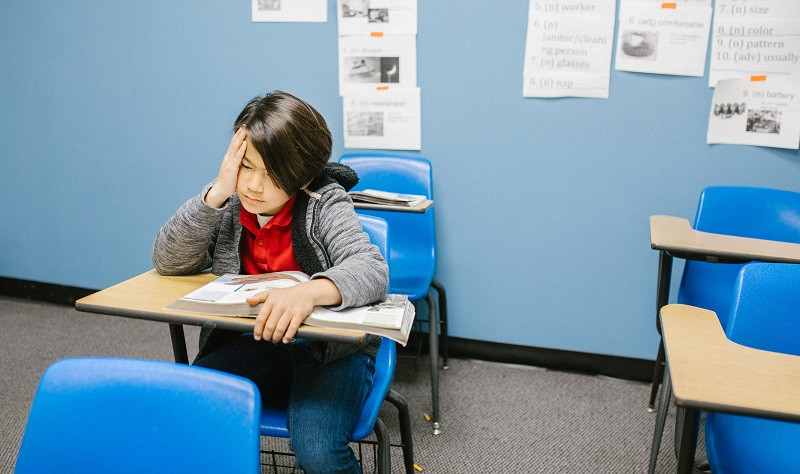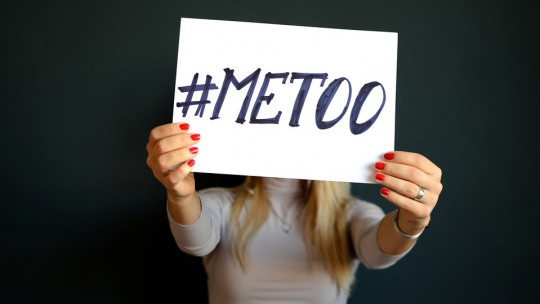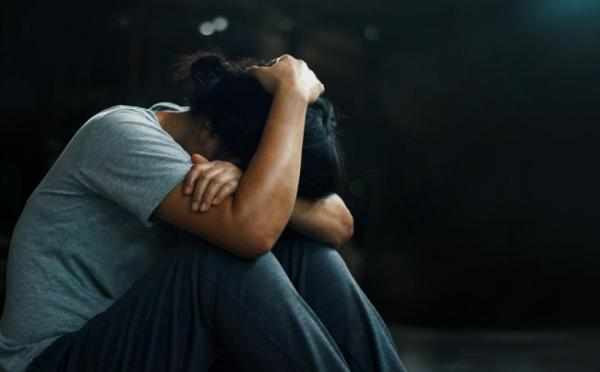
Repeated and intentional physical bullying, abuse and aggression towards a person produces devastating consequences for the victim.
In recent years, an increase in the number of cases of persistent physical aggression has been observed. This generates a concern in society that must ensure that individuals are more aware of what bullying entails.
Therefore, it is essential to know what characteristics it presents, how we can detect it and how to prevent and act against this type of harassment. We cannot be indifferent and we have to be attentive to be able to act and treat both victims and aggressors.
In this article we will know better What is meant by physical bullying? what causes and consequences are related to it and how we should act to prevent it and put an end to it.
What is physical bullying?
Physical bullying is a type of abuse, harassment or intimidation that occurs repeatedly and where there is physical contact between the victim and the aggressor It can manifest itself in different ways, from hitting, pushing, kicking, spitting or even destroying or stealing the belongings, such as the victim’s school supplies.
The aggressor is usually a figure with authority or stronger than the victim, someone who is difficult to defend or escape from Given this situation, the victim will find himself in a state of helplessness in which he sees and believes that nothing he does can prevent or stop the attack, he cannot do anything to save himself.
Physical bullying is one of the most common types of bullying, it can be found in schools, but it can also be present in the workplace among adults. Given that men, the masculine sex, tend, and are more frequently related, to physically aggressive behavior with respect to women, this form of bullying will be more likely to be generated and present among children, men.
It is believed and pointed out as the most dangerous type of bullying, since in other types of bullying, such as psychological or verbal bullying, only psychological effects or consequences occur in the victim; However, in the case of physical abuse Apart from the psychological alterations that also occur, damage or physical effects will appear on the victim, which may endanger their physical integrity

Currently this form of harassment has increased, the number of subjects affected by physical harassment has increased. This has generated great concern at a social level, given the fatal consequences that this type of bullying causes. As in all behavior, it normally begins with less serious patterns or attacks, that is, It is common for the aggressor or aggressors to begin verbal harassment and then move on to introduce physical abuse
There are different variables or characteristics that can predispose or relate to the presence of bullying, some of these variables would be: the race of the victim and the aggressor, gender, socioeconomic status or social class, and the physical appearance or personality of the victim.
The only “beneficial” characteristic or fact is that Being a very aggressive type of bullying, it leaves signs and marks on the physical body, and it is simpler and easier to be detected by the subjects who are part of the victim’s environment, such as their parents or teachers.
Characteristics of physical bullying
A necessary characteristic for aggression to be considered bullying is that it occurs repeatedly, on more than one occasion, and not as a single, isolated event. This type of bullying can be found in different spaces where the victim and the aggressor coincide ; For example, in the classrooms of the school or institute, in the playground, in the universities or even as we have already pointed out before at work, in this particular case the harassment is called mobbing.
Another fundamental fact to be able to consider aggression as physical bullying is that this is produced intentionally by the aggressor that is, that the action is carried out with the purpose of harming and attacking the other person, and does not occur by accident.
In harassment it is also observed an inequality of power The aggressor surpasses the victim in some characteristic, for example physically, he is bigger and has more strength; Psychologically, he is smarter; or socially, he has a favorable position, presenting the support of other peers. It is important to consider the degree of aggressiveness, since this attempts to produce control and power over the attacked.
It has been considered that the aggressor on many occasions is not just an individual, but is a group of subjects who support and cover up for each other
The ways of physically attacking can be multiple, from hitting or hitting to breaking or stealing objects and the victim’s belongings. Apart from the physical damage or loss that these attacks entail, as we have already mentioned, they will also produce psychological effects, generating a decrease in the self-esteem of the victim, as well as causing a feeling of insecurity that will not allow them to be calm in many of the environments where they spend a large part of their lives. of the day such as school.
This physical abuse also affects the victim’s social environment since one of the purposes or consequences of physical bullying will be the isolation or exclusion of the victim, both by his aggressors, who, as expected, do not want him as a friend, as well as by other classmates who do not want to be close. , that they are related to the victim, since they are afraid that this fact will cause them to be attacked in the same way.
On many occasions, to prevent the victim from reporting the harassment or asking for help, the aggressors prevent the victim from communicating freely, coercing or forcing the victim to take actions and perform a behavior that she does not want or does not have the will to do.
Causes of physical bullying
There are various causes that can lead to physical harassment, therefore sometimes it is difficult to clearly identify the causes that led to the aggression.
Some of the Typical personality traits that commonly occur in aggressors They could be some of the following: showing a tendency or ease to act aggressively or impulsively, need to dominate or exercise power over others…
It is not uncommon for aggressors to have low self-esteem and through aggression they try to solve and compensate for their emotional shortcomings. In the same way, they are also individuals with insecurities who try to increase this, harming other people and making them feel less safe. Finally, narcissistic traits can also be observed, giving the sensation or believing themselves to be superior to the victim.
It also plays an important role in the presence of bullying. the frustration that the aggressor feels about aspects of his life The impossibility or difficulty of controlling the situation produces frustration, irritability and anger that he cannot control and will need to vent.
Although it may seem contradictory, it has been proven that on many occasions the aggressors have also been or are victims of aggression. This affectation generates the need to restore their power or pride and they mistakenly believe that acting in the same way they have done will make them feel better.
In the same way, it has been seen that it is common for the aggressor do not show empathy towards the victim, not putting yourself in your place and understanding the damage it is causing you. This lack of empathy can occur because the individual is still too young and has not developed this ability, or simply because he does not have the necessary social and emotional abilities and skills.
It is also common for the aggressor to feel some envy towards the victim, to feel inferior in some aspect compared to her. In the case of physical bullying, where the aggressor is normally bigger or stronger than the victim, it is common for the differences and the feeling of inferiority to be more related to intelligence. The attacker attacks the victim trying to hide this insecurity and inferiority.
Other characteristics or environmental variables that may occur as a cause of physical harassment are the stressful environment in which the aggressor lives Even as we have already said, you can be a victim of other types of abuse; and the lack of attention that the offender receives from his parents and friends, a lack of care and support.
Consequences of physical bullying
As we pointed out previously, this type of harassment produces effects and physical damage to the victim that in some cases can be permanent making it necessary for the victim to adapt to these new circumstances.
On the other hand, like any other type of bullying, it also generates psychological alterations, which can lead to the appearance of depressive or anxiety disorders, among others Even experiencing a situation of harassment can lead to suicidal tendencies and wanting to end one’s life to avoid further suffering.
How to detect, prevent and act against this type of harassment?
It is important that the people around the possible victim are aware of whether: changes in behavior occur, for example, they no longer have fun with anything; changes in mood, most of the time you are sad; It is difficult for you to sleep or, on the contrary, you sleep much more than before; eat less or refuse to eat; Wounds or bruises on your body are common.
Given the seriousness of the consequences generated by bullying It will be essential that anti-bullying or harassment prevention protocols are implemented and used It is very important that the environment surrounding potential victims knows and is informed about the possible types of bullying, how to detect them and how to act. In particular, it is of great relevance given the growing number of cases of harassment in classrooms that teachers and academic staff are trained and trained.
Such is the severity of the matter that in cases where those involved are over 14 years of age, it is advisable to report the abuse and demand criminal responsibility. Likewise, it is recommended that you request help from experts, whether in the legal or health field.








